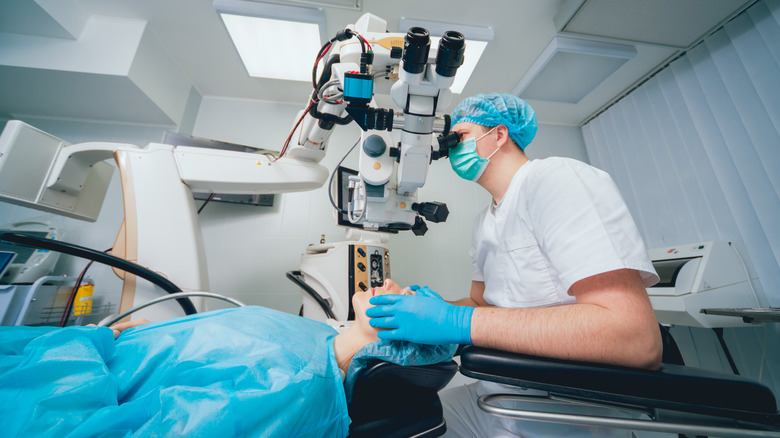LASIK Versus PRK: Which Eye Surgery Is Best For You?
They say that a picture is worth a thousand words. But for some people, that picture might only be worth a few words — like blurry, out of focus, or flat — if they have a vision problem. Three common conditions associated with vision problems are astigmatism, farsightedness, and nearsightedness.
In farsightedness or hyperopia, the anatomy of the eye weakens the capacity of the eye to focus on things up close. So while you might be able to see things on the horizon with normal detail, trying to read a book may result in blurry vision. Nearsightedness or myopia means the opposite. Seeing things up close may not be a cause for concern, but when you try to focus on items in the distance you may lose detail or have trouble making out the object. Finally, astigmatism blurs your vision up close and from afar.
One way to treat these vision issues includes eye surgeries like LASIK and PRK. Keep reading to find out which procedure could be right for you.
LASIK: pros, cons, costs
LASIK eye surgery is an outpatient procedure that uses a laser to burn a small flap in the outer layer of the eye, according to WebMD. The steps are simple, and you can expect to be done in about half an hour, even if you get surgery on both eyes.
To start, the doctor will make sure your eye is clean and will numb your eye with drops. Next, a device is fitted to your eye to stop the blinking motion, and a suction device is placed to keep your eye from moving. A laser is then used to cut the flap in your cornea. Once finished, the eye is given a new shape to help you see better. Although there will be a flap over the area, it will eventually heal with time. With that being said, there can be side effects like burning, itching, and pain, and in very few cases, you can be sensitive to light, develop red patches, or even see halos near lights during the night time. Nevertheless, infections are rare.
Overall, LASIK can cost upwards of $2,200. The procedure is a good option for those who want to correct their vision quickly, seeing as you can recover and see clearly in just a few hours.
PRK: pros, cons, costs
PRK eye surgery is also an outpatient procedure that uses a laser, but instead of making a flap in the cornea, this procedure temporarily gets rid of the outer layer of the cornea. But don't worry, it grows back in time. Like LASIK, with the PRK procedure, the doctor will clean and numb your eye, then place a device over the eye to prevent the blinking motion. Next, the outer layer of the cornea is completely removed with items such as a laser or brush, among others, and then the cornea is reshaped. The PRK procedure can run for about 15 minutes to complete both eyes.
The side effects include soreness, itchiness, and seeing halos near lights during the night time. Infections, scarring, and vision loss are rare side effects. Notably, recovery can take anywhere from a week to a month, and you'll need to wear a bandage contact lens.
PRK can cost several hundred dollars less than LASIK and is a good option for those with more time to recover, in addition to those with dry eyes or thin corneas. It may also be better for those who play sports because the flap from a LASIK procedure can re-open.



